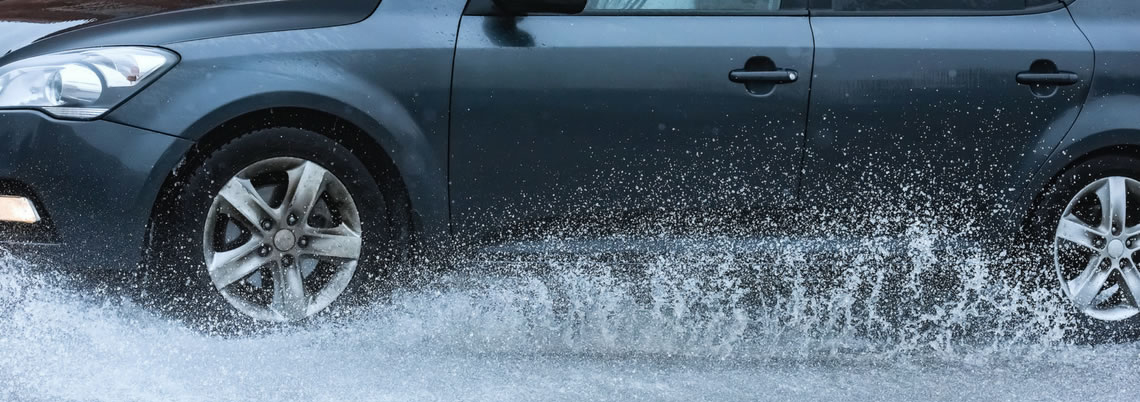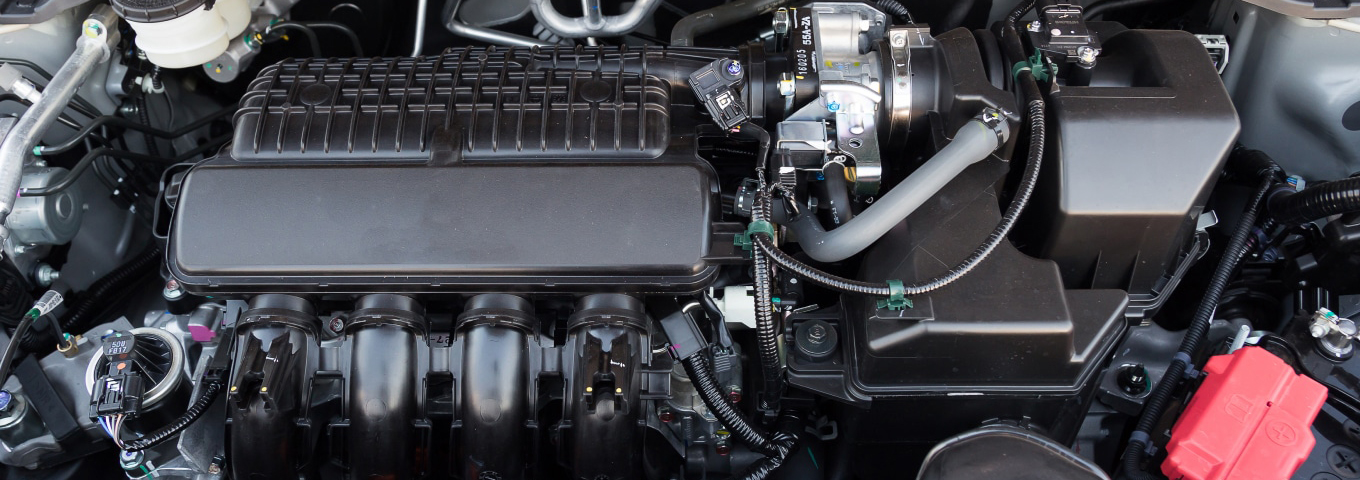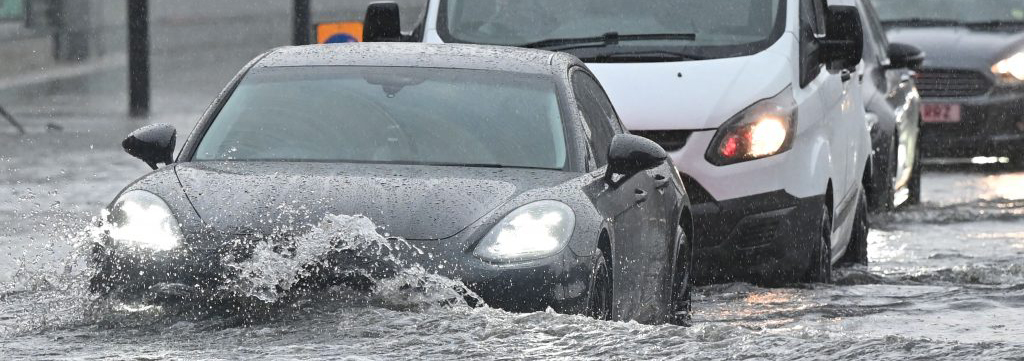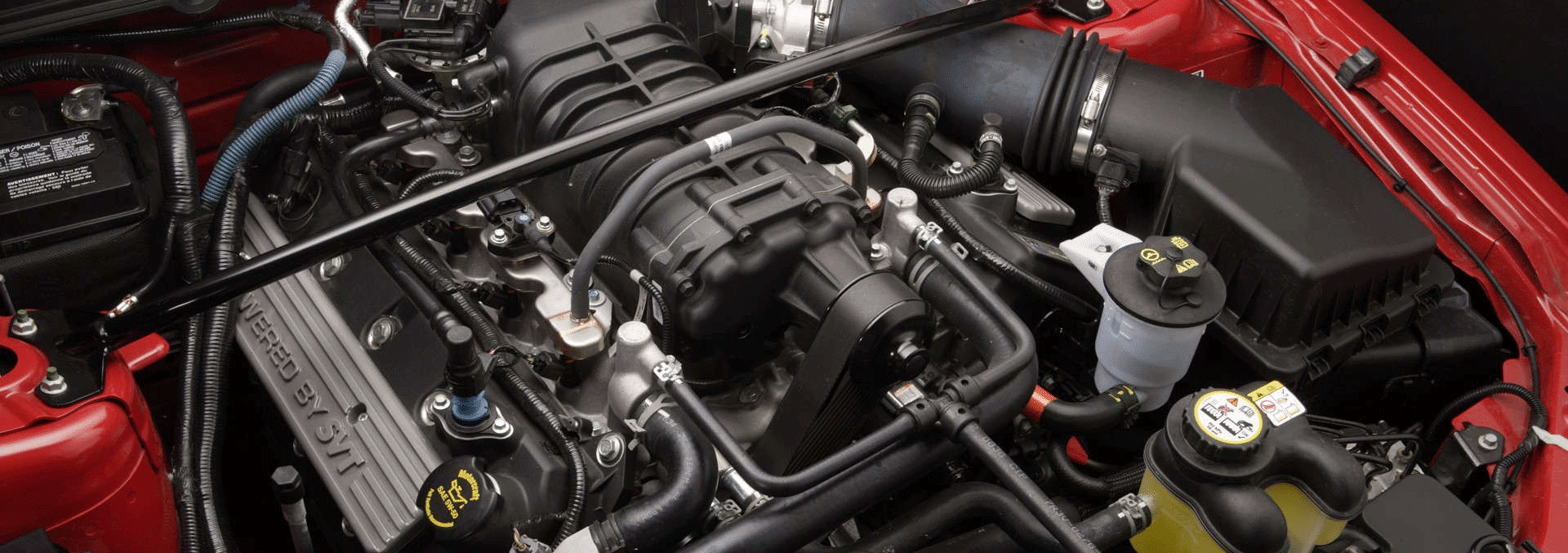
Sometimes we have to go out when it is raining. Every time you confront a puddle while driving, it is important that you know the vehicle is safe to pass. If you are not sure, do not try. But in case the car does stall in water, what should we do? Let's talk about water in the engine.
When the vehicle is in heavy rain or a puddle, we have no way to determine in the car what exactly caused the stalling. Therefore, the next thing we should do is to make the engine stop working. In this situation, we should rely on external forces to move the vehicle to a safe place.
There are many possible reasons why a vehicle may stall after water enters the engine.
① Engine stalls at low rpm due to excessive exhaust pressure with exhaust pipe in water.
② The air filter is wet. The air intake is insufficient. (water has not yet entered the manifold)
③ A small/large amount of water goes into the engine. The engine works in bad conditions/damages and stalls.
Here is one question. Will reigniting the engine after it has been stalled in water (with a lot of water in the cylinders) cause a bent connecting rod and more severe consequences?
The answer is no! When the vehicle is wading at a slower speed, the water goes into the cylinder and causes the engine to stall. At this point, the water is incompressible, which will undoubtedly cause the connecting rod's bending and even damage the cylinder.
In this case, the crankshaft may not turn at all. While the engine is stalled by water, the inside of the cylinder is basically filled with water. Since water is incompressible, there is little room for the piston to move up.
Even if you turn on the ignition switch, the starter motor will not work at all, not to mention the damage caused to the engine. Moreover, in this case, the engine is already in the flameout because of the large amount of water. There are some irreversible damages.

The car owner is unaware that the engine has been fed with water in many cases. There is not too much water inside, and it's enough for the engine to start.
At the moment of starting, some piston goes up to complete the compression before ignition. Almost at the same time, the intake valve closes.
Therefore, the inside of the cylinder becomes a sealed space. When the piston moves up to a certain position, there will be a significant increase in resistance due to the incompressibility of water. However, the other pistons are doing work to push the crankshaft and send the piston to the top dead center.
In short, the water does not give way. In contrast, the connecting rod becomes much weaker (minor deformation occurs). The water will be discharged out of the block with the exhaust valve opening at startup. It is a fact that it causes damage to the connecting rod.
The bent connecting rod inadvertently reduces the compression ratio of the cylinder and increases the resistance to engine operation. As a result, the vehicle is not as powerful as that of the original running.
The driver may not be aware of what is happening in the cylinder. He will think the car is not powerful enough and deliberately press the gas pedal harder. He wants to get a higher rotational speed to gain energy.
The slight bend in the connecting rod will make the piston's move in the cylinder extremely unstable. The excessive revs will undoubtedly accelerate the bending.
At the same time, the wobbling of the piston in the cylinder will also aggravate the bending of the connecting rod. The more bent the connecting rod, the crazier the piston wobbles in operation.
In the end, the piston ring and the cylinder wall are damaged. The piston is stuck in the cylinder. The connecting rod will be unable to withstand the great pressure and be broken.
In more severe cases, the broken connecting rod will pierce the cylinder. The engine will then lose power, and the vehicle will stop after a short skid.

Negative pressure is generated during the downward phase of the piston. The pressure is subsequently released through the intake valve. The pressure value is also almost constant at steady rpm. When the car accelerates, the throttle swing expands the intake throttle area.
At this time, the injection volume is also corrected in coordination with the ECU, with the increase in speed (instantaneous acceleration of the reciprocating motion of the piston). The negative pressure fluctuates considerably.
The water faces one more choice before it is drawn into the cylinder. Which cylinder to go to? This is the first choice the water makes after successfully breaking through the air filter and the throttle. The intake manifold consists of forks that lead to each cylinder.
There won't be two cylinders at the same time in the intake stroke, but there will be a single-cylinder into the possibility of water in theory.
However, even if the engine is running at idling, the engine speed of about 800 rpm is sufficient to completely divide the water gushing into the intake manifold in an instant.
Even if the water is not over the exhaust pipe when the engine is running, it is not a big deal. The engine exhaust pressure is enough to push the water away.
However, after the engine is turned off, if the water level is higher than the location of the exhaust manifold, the water must invade the exhaust pipe and enter the cylinder through an open exhaust door. This causes the engine to enter the water.
The vehicle runs into a puddle, and water enters the engine. The car was towed back to the repair shop, and the engine was never even started.
Suppose the vehicle did not stall in the water, and it was only soaked in water and was towed to the repair shop afterwards (without starting the engine). In that case, this will basically not cause irreversible damage to the engine.
In this situation, clean the water inside the engine. Remove the intake pipe and the intake manifold. The water inside can be blown dry by compressed air.

The vehicle runs in water, and the engine stalls due to water ingress.
If the car stalled in the water, the technician may disassemble the engine. Indeed, it's really hard to tell by simple means whether the connecting rod was crushed and deformed during this unnatural stall.
The calliper measurement can compare the distance between the two pistons in the same stroke to the upper edge of the cylinder. If there is a difference in the value of the two, the larger one is likely to be a deformation of the connecting rod.
Of course, there may be a problem with both, which needs to be further confirmed by rotating the crankshaft to put the two pistons in the top dead center to see if the piston edge is flush with the top edge of the cylinder.
After a one-by-one check, it is perfectly possible to determine which cylinder's connecting rod has a problem. This helps buy the relevant parts in a targeted manner. But for the technician, to achieve better repair results, they advocate replacing all connecting rods and pistons.
After the water goes into the engine, the driver starts the engine and drives it for a while without knowing it.
For an automatic, under normal conditions, we step on the brake and press the lockout button on the shift lever to pull the lever into the gear we need.
However, the brake signal is transmitted electrically through the brake switch to the transmission computer, which in turn sends a command to the gear locking module to release the limit catch.
The transmission will produce certain gas in the process of working. A large amount of gas accumulation will make the internal pressure rise. This kind of environment is obviously not conducive to the transmission operation.
In order to solve this problem, engineers install an air vent at the transmission housing. Fundamentally, the air vent is actually a one-way valve. Under normal conditions, the valve is closed. The check valve will be opened for pressure relief when the internal pressure is on.
Therefore, when we talk about the design structure, the gearbox is less prone to water ingress. However, everything is possible. If a foreign object sticks to this valve, it cannot be restored to the closed state. Water will enter the transmission through this air vent when the accumulated water is not over the highest level of the transmission.
When the transmission oil is mixed with water, the performance of the transmission fluid will be seriously affected. The lubrication is damaged, but the transmitting power will also be reduced, which in turn causes the clutch plate to slip.

As the oil temperature rises, this can also lead to the water vapour or even boiling of the oil-water mixture. These sticky substances can also accumulate in the valve body, which causes blockage of the valve body, thus affecting the control system of the transmission.
Water in the automotive engine and subsequent damage can be troubles that require a professional solution. Of course, if you must drive a car when it is raining heavily, you should avoid driving into puddles to prevent unnecessary damage.
 Lauritz Carolsfeld
Lauritz Carolsfeld  May 11, 2022
May 11, 2022